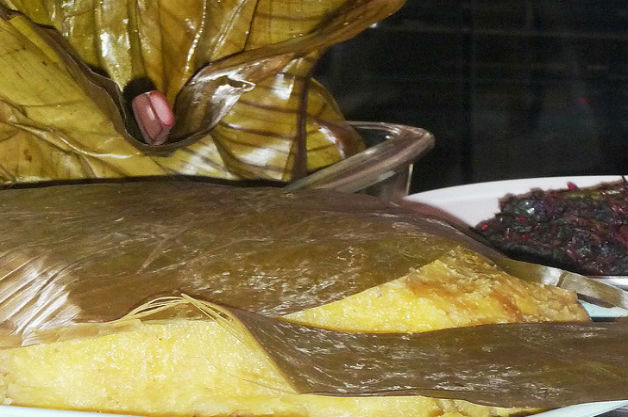"I come from the Buganda tribe, and our staple food is matooke"
May 1 In the East African nation of Uganda, every ethnic group has its own cuisine, helping to define not only its tastes but also its cultural identity. Diana Phoebe, 25, living in the capital city Kampala, reports.
In the East African nation of Uganda, every ethnic group has its own cuisine, helping to define not only its tastes but also its cultural identity. Diana Phoebe, 25, living in the capital city Kampala, reports.
Uganda has more than 52 tribes. Each of these tribes has its own culture, and a staple food that totally defines them.
I come from the Buganda tribe, and we eat a couple of foods, but our staple is ‘matooke’. This is what most people refer to as green bananas. You get them from the garden, and they have a sticky white sap that can be messy. So you have to either wear gloves or remove jewelry when peeling off the skins.
The fruit is wrapped in banana leaves and tied with the fibres and placed in a saucepan. The midrib, or main stem, of the bunch is cut into pieces and added to the bottom of the saucepan to stop it from making the banana watery or soggy. This allows only the steam to get to the fruit.
It is then covered with other banana leaves and left to boil for about 45 minutes. At that point it is taken out and mashed. You mash it using your hands, turning and pressing the food in the original banana leaf. Then it is put back on for another 30 to 40 minutes on low heat. It is then ready to serve with any sauce.
The steaming method is very healthy, because you do not have to use extra fats – all the nutrients are retained in the food in their natural amount. Sauces, like groundnut sauce, can be prepared through steaming, as can chicken and beef (this we call luwombo), placed in smoked young banana leaves and tied with fibres, and then eaten with mashed green banana leaves.
But this is just my tribe’s cuisine. ‘Malewa’ is a dish made by the Bagisu in eastern Uganda made from bamboo shoots. The Banyankole from western Uganda meanwhile have ‘eshabwe’, an appetizer made out of ghee, rock salt and small pieces of smoked meat.
The Batooro, another tribe from western Uganda, enjoy a dish called ‘firinda’, which involves peeling off the skins of boiled beans, mushing them into a thick paste, then adding cow butter and salt to the paste. This goes well with millet.
Most tribes in Northern Uganda love millet and ‘ugali’, the main staple food there. Indeed many tribes share their staple foods and you will find millet across northern, eastern and western Uganda.
…………………………………………………………………………………………………………………
Opinions expressed in this article are those of the author and do not necessarily represent the views of the Commonwealth Youth Programme. Articles are published in a spirit of dialogue, respect and understanding. If you disagree, why not submit a response?
To learn more about becoming a Commonwealth Correspondent please visit: http://www.yourcommonwealth.org/submit-articles/commonwealthcorrespondents/




